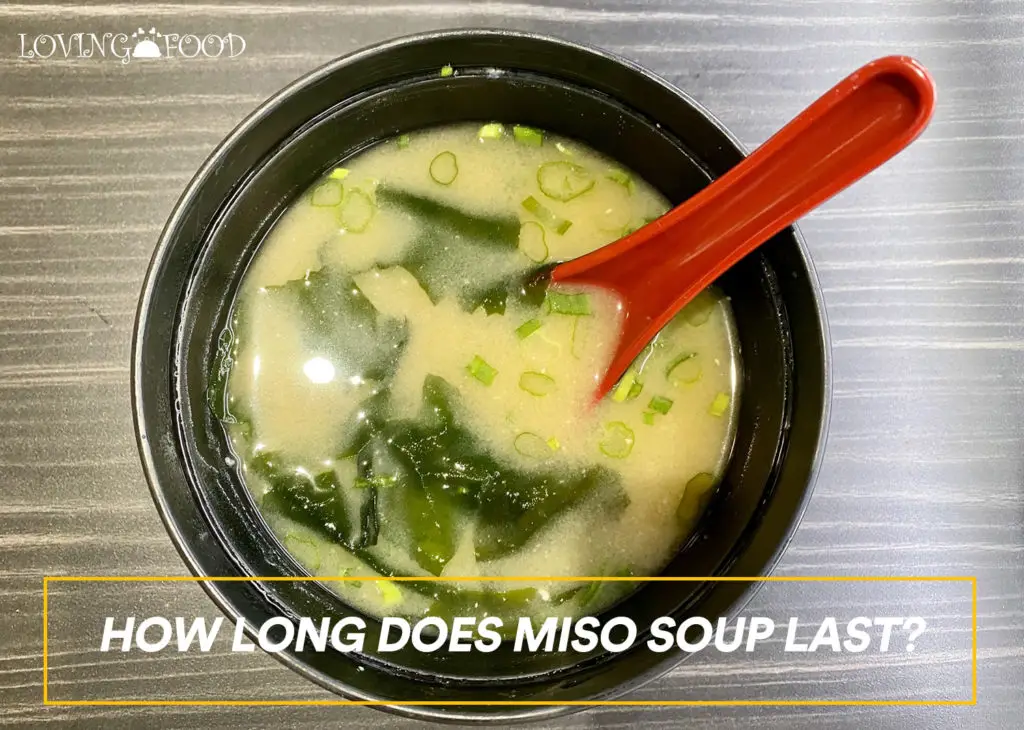Despite its Japanese origins, miso soup has become a popular choice for busy and cold weeknights in most homes around the world, thanks to its use of easily accessible veggies.
Miso soup is a great way to make the most of leftover vegetables rather than throwing them away. While this may be true for most people, some prefer to eat their miso soup as a whole meal, necessitating the question of how long miso soup can last.
Without warming, homemade miso soup can last up to 10 hours, 3 days in the fridge, and about 6 months in the freezer. Canned miso soup, on the other hand, can be preserved in the fridge for up to three months.
This article offers information on how long miso soup can last and the best ways to preserve it. We have also included some suggestions on how to enjoy your miso soup.
How Long Does Miso Soup Last?
The period in which miso soup can last depends on whether it is homemade or processed. Without heating, homemade miso soup can last up to 10 hours, 3 days in the fridge, and about 6 months in the freezer.
Unopened miso soup has a shelf life of around a year, while opened miso soup can last up to 3 months if stored properly.

How to Preserve Your Miso Soup
If you store your miso soup properly, you can extend its shelf life. After you’ve cooked or opened your miso soup, the best way to keep it fresh is to refrigerate or freeze it. If you would not be serving your miso soup for a long time, these preservation methods are ideal.
When preserving miso soup, keep the following guidelines in mind:
- After you’ve opened the package, ensure it is tightly sealed.
- Refrigerate homemade miso soup after it has cooled.
- If you made a large batch of miso soup, divide it into smaller batches.
- Store them in freezer-safe containers, or resealable bags.
- Make sure the plastic bags and contents are labeled. This will assist you in determining the date of expiration.
- Place the plastic container or bag at the refrigerator’s bottom where the temperature is most stable and lowest.
If you don’t want to refrigerate your miso soup, we’ve included some more suggestions to help you keep it fresh for a few hours. They include:
- Use a thermos flask to keep miso soup warm.
- Continue to simmer the soup in a slow cooker.
- Keep your miso soup warm for a long time with insulated bags and jars.
- Coolers can also keep miso soup at high temperatures for a long period.
- Wrap your covered bowl of soup in aluminum foil and a napkin to keep it warm.
How to Know When Miso Soup Has Gone Bad
Look out for these signs to determine if your miso soup has spoiled:
- Check for changes in appearance and texture. Molds, discoloration, and sliminess are indicators that your miso soup has gone bad.
- An unpleasant smell is also a sign that your miso soup is spoiled.
- Check the expiration date of your miso soup.
- Look for signs of bulging and swelling if stored in a container. Dispose of the container if signs are discovered.
- Taste the soup if there are no signs that the miso soup has gone bad.
Tips For Your Miso Soup
We have included some suggestions to ensure you enjoy your miso soup. They are:
- If desired, serve your miso soup with fish, tofu, or potatoes.
- Adding more ingredients to your miso soup, such as mushrooms, onions, and chili pepper, can turn it into a stew. A dish with more ingredients is more nutritious.
- Place leftover miso soup in an airtight container.
- Before you purchase miso paste, check the expiration date.
- Start by cooking with a small amount of water, then add more when needed.
- Add spinach and spring onions near the end of the cooking time. This is because they wilt quickly.
- Miso paste comes in two varieties: red and white. Red miso paste is salty, whereas white miso paste is sweet.
- You don’t need to add dashi if your miso paste contains dashi.
- Make sure to add the hard vegetables early enough to soften them. Miso paste is the last ingredient to be added to a dish.
- Don’t overcook your miso paste. Its aromatic essence may diminish as a result of this.
Frequently Asked Questions
Is miso soup good for hangovers?
Yes, miso soup is good for hangovers because it contains high sodium that helps retain fluid in the body. However, water is the best option to recover from hangovers.
What is Miso soup made of?
Miso soup is made of dashi, miso paste, kombu, wakame, silken tofu, and spring onion. While these are the main ingredients, some ingredients like mushrooms, chili peppers, and carrots can also be added.
Does miso soup make you poop?
Yes, miso soup can make you poop if you have constipation and when consumed in large quantities. Miso soup contains high fiber that aids digestion.
Final Note
Because it is plant-based, miso soup is a nutritious dish. This soup meal takes little time to prepare and is simple to prepare. Miso soup goes well with rice, kimchi, and grilled fish.
What’s your favorite way to enjoy miso soup? Let us know in the comments section 🙂








